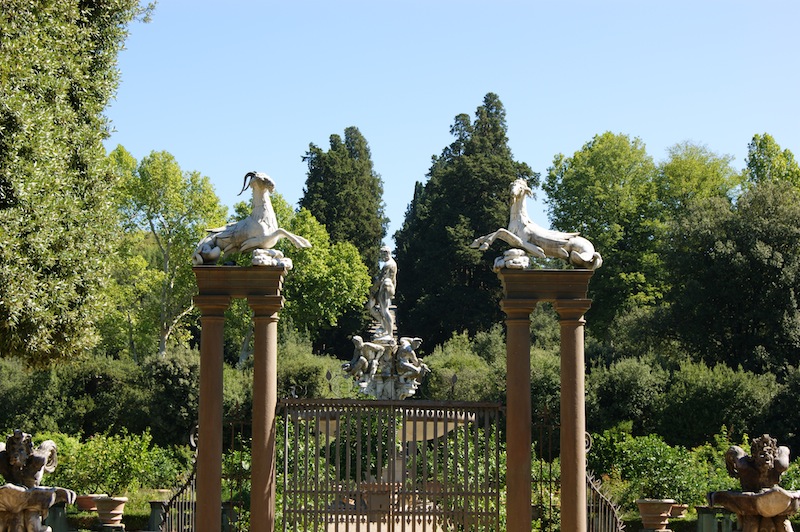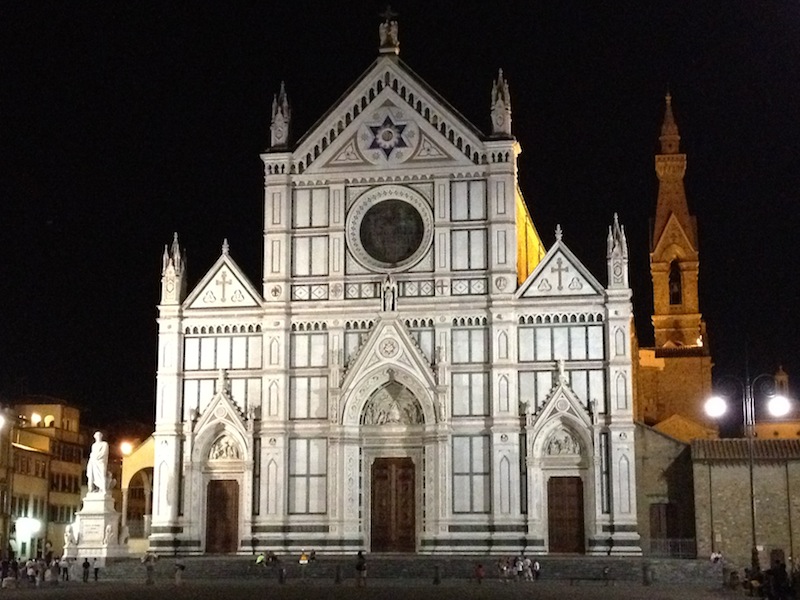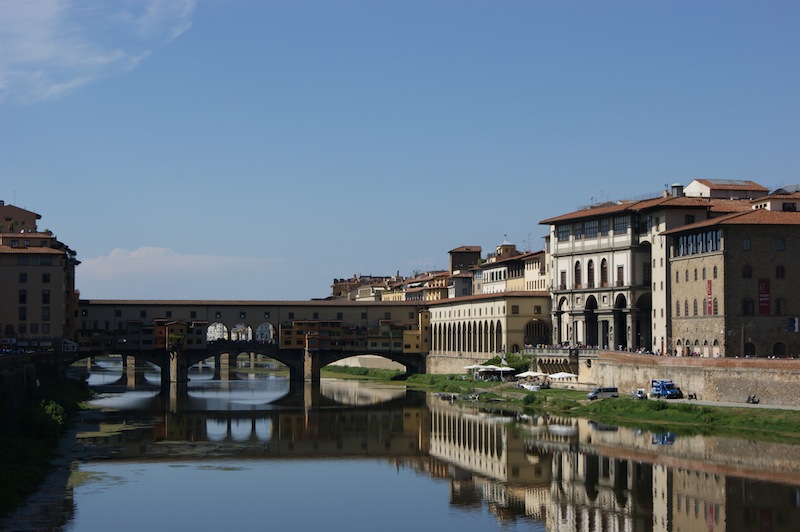It was inevitable that we’d end up in Italy’s most tourist-tastic region one day. Our excuse for the trip to Tuscany was a friend’s wedding in Pisa, but historic Florence was top of our list for a top en route.
It turned out to be a city of crowds. Monumental crowds. It was a city that positively swarmed with tourists, morning, noon and night.
At one point, we wandered into the Piazza della Signoria to the most extraordinary sight – a mass of people that suggested an impromptu street protest was taking place.
It turned out that this picturesque square in the heart of the city was the meeting point of tour groups fresh off the cruise ships that had moored overnight on the east coast of Tuscany. We faced a sea of people, most of whom had just a few hours to catch the highlights of Florence, and wondered how on earth we’d get through to the other side.

Nearby were extra-long queues of people trying to get into one of the greatest art galleries in the world, the Uffizi, while around the corner were rivers of people trying to cross the Ponte Vecchio, the little bridge lined with jewellery shops that’s been the subject of numerous photos, paintings and sketches over the centuries.
We didn’t bother with the Uffizi, partly because of the queues but also because art galleries are not really my thing. And neither did we venture inside the Duomo, again because of the queues. Instead, we found ourselves aiming high, by accident or design, and getting a birds-eye view of the historic UNESCO World Heritage Site. And it was generally a good move as many other visitors to the city either couldn’t or wouldn’t opt for the climb up some of its great attractions. We weren’t exactly alone but at least we had room to breathe.
We began with the Duomo, just a few steps away from our central hotel, the charming Hotel dei Macchiaioli. The marble-clad cathedral dates mainly from the 14th century and looks particularly majestic lit up at night, when all forms of Florentine life, from hawkers to young lovers, hang about bathed in its spotlights. It was early in the morning, though, when we headed for its red-tiled dome – the city’s legendary trademark – and the viewing platform at its peak.

Designed by Brunelleschi, it stands as a remarkable example of Renaissance engineering and architecture. But it was a hot and sweaty climb up between the inner and outer skins of this masterpiece. Huffing and puffing, and occasionally experiencing some seriously wobbly moments of something close to vertigo, I struggled upward and thanked the heavens that neither of us suffered from claustrophobia.
On the way, we admired the extravagant, colourful frescoes decorating the inside of the dome before emerging into the light to witness the most incredible views of the city beyond. In front of us, the campanile (or bell tower) stood proud and the River Arno wound its way through the landscape. Further away were the green Tuscan hills.
It had been hard work getting up there but it was worth every sweaty and scary moment.

Come early evening we ventured to the other side of the Arno and up the hill to the Piazzale Michelangelo. At first glance it wasn’t particularly promising – more like a car park full of grim souvenir stalls. But there was a stately copy of David to admire and a cocktail bar where the romantic gathered to watch the sun setting over the city. Plenty were there at the magical hour, as the late evening sun painted golden hues over the historic buildings below. With darkness, the lights came on and made the city sparkle.
We walked back down into town and crossed the Ponte alle Grazie for excellent views of the Ponte Vecchio at night, catching some fine reflections in the river.
After all that climbing, eating well at the Ristorante Frescobaldi and consuming more than a few cocktails at the Savoy Hotel on the ever-busy Piazza della Repubblica, we slept very well.

The next day saw us crossing the Ponte alla Carraia to the busy Oltarno district, which was a great way to see Florence’s back streets, and then walked on to the Giardino di Boboli behind the Palazzo Pitti.
The gardens, originally laid out in the 16th century, were remarkably quiet for Florence. We explored a number of different sections, including an avenue of cypress trees, a walled knights’ garden and a delightful ornamental pond. The shade came in handy with the sun beating down and we again discovered some excellent views over the city.
We enjoyed lunch and made our way back to the Piazza della Signoria, where the Palazzo Vecchio stands imperiously to one side. The home of the city’s government, complete with obligatory tower, we were there to join the Secret Passages tour.

Our excellent guide took us up a secret staircase within the building’s extra-thick walls, designed to be an escape route for the powerful elite, and into some remarkable rooms. These included the stunningly decorated Study of Francesco I, with walls lined with paintings that concealed cupboards and a secret door. Beyond lay the small Treasury room of his father Cosimo I.
We ventured into the vast and palatial hall known as the Salone dei Cinquecento, where the rulers met. Today it’s hung with the most dramatic paintings of battle scenes you’ll find anywhere.
Our tour ended in the roof of the building, above the Salone, where we saw the massive wooden trusses that hold the ceiling of the ancient hall firmly in place.

We didn’t spend all our time high above the busy streets of Florence. For example, we enjoyed the Basilica di Santa Croce, with its tombs of famous Florentines, exquisitely decorated chapels and peaceful cloisters. We relished the tiny but sumptious Magi Chapel in the Palazzo Medici Riccardi, and the Savoy royal family’s state rooms at the Palazzo Pitti.
We also jumped on the bus for a day trip into the hills at Fiesole, which incidentally offered more great views of Florence.
And more than anything, we enjoyed wandering into the backstreets as far away from the crowds as it was possible to get in this glorious city, to find little bars and cafes to pass an hour or two.
Because we always needed a beer or two after all that history.

